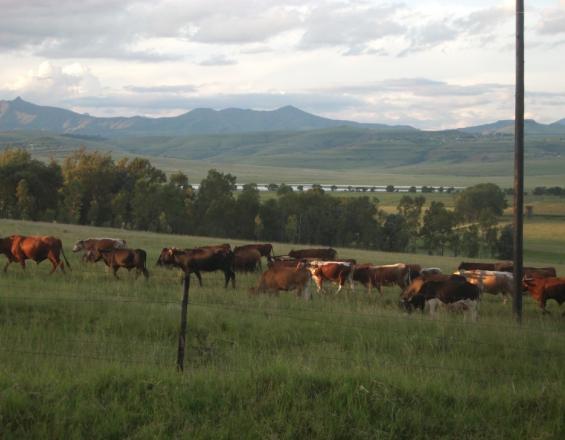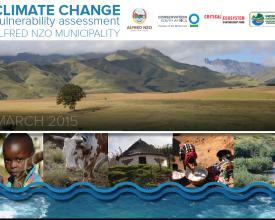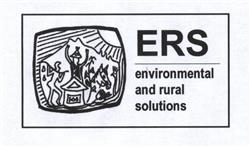
Développement de paysages durables dans les prairies d'Afrique du Sud

Conservation South Africa (CSA) a réalisé une évaluation de la vulnérabilité de la municipalité du district d'Alfred Nzo, qui comprend des cartes des priorités de l'EbA et une stratégie de réponse au changement climatique. La CSA pilote l'EbA en travaillant en tant que partenaire de mise en œuvre avec les programmes environnementaux du ministère de l'environnement afin de maintenir les zones exemptes d'espèces exotiques envahissantes après le défrichage, en utilisant des écorangers pour aider à la restauration et en travaillant avec les agriculteurs communaux sur la gestion durable des pâturages.
Contexte
Défis à relever
Emplacement
Traiter
Blocs de construction
La politique nationale de lutte contre le changement climatique permet une mise en œuvre au niveau local
Facteurs favorables
Leçon apprise
Évaluations de la vulnérabilité et cartes des priorités de l'EbA intégrées dans la politique et la planification locales et comprenant un indice de suivi
Facteurs favorables
Leçon apprise
Ressources
Programme Ecoranger et programme d'incitation à l'utilisation des terres de la DEA
Facteurs favorables
Leçon apprise
Ressources
Impacts
1) Les communautés ont un meilleur accès à l'eau grâce à l'élimination des espèces exotiques envahissantes et à la restauration/conservation des zones humides et des sources. Les femmes parcourent des distances beaucoup plus courtes qu'auparavant pour aller chercher de l'eau. Cela a permis de réduire le nombre d'incidents au cours desquels des femmes et des enfants étaient attaqués et violés alors qu'ils marchaient dans la jungle.
2) Les agriculteurs sont plus résilients car ils ont accès à des pâturages qui étaient auparavant recouverts d'une végétation exotique. De plus, en adoptant des pratiques de gestion durable des terres, leur bétail est plus productif grâce à de meilleurs pâturages.
3) Les engagements communautaires ont créé une plateforme permettant aux personnes âgées de partager les connaissances indigènes avec les plus jeunes.
4) Les moyens de subsistance des agriculteurs sont améliorés car leur bétail est plus productif et ils ont un meilleur accès aux marchés.
5) Le piégeage du carbone dans les sols est un avantage de l'approche, mais il n'est pas mesuré pour l'instant.
6) Le réseau fluvial est moins sensible à l'érosion des sols et à l'envasement des barrages. L'engagement et l'appropriation de la communauté sont très importants en raison des avantages directs.
7) La santé du bétail s'est améliorée, les maladies sont combattues et les abattoirs sont plus heureux d'acheter du bétail provenant des zones communales grâce aux interventions de vaccination.
8) La protection de la biodiversité a été renforcée grâce à l'élimination des espèces exotiques envahissantes et à l'introduction du pâturage tournant et de la mise au repos.
Bénéficiaires
Objectifs de développement durable
Histoire








